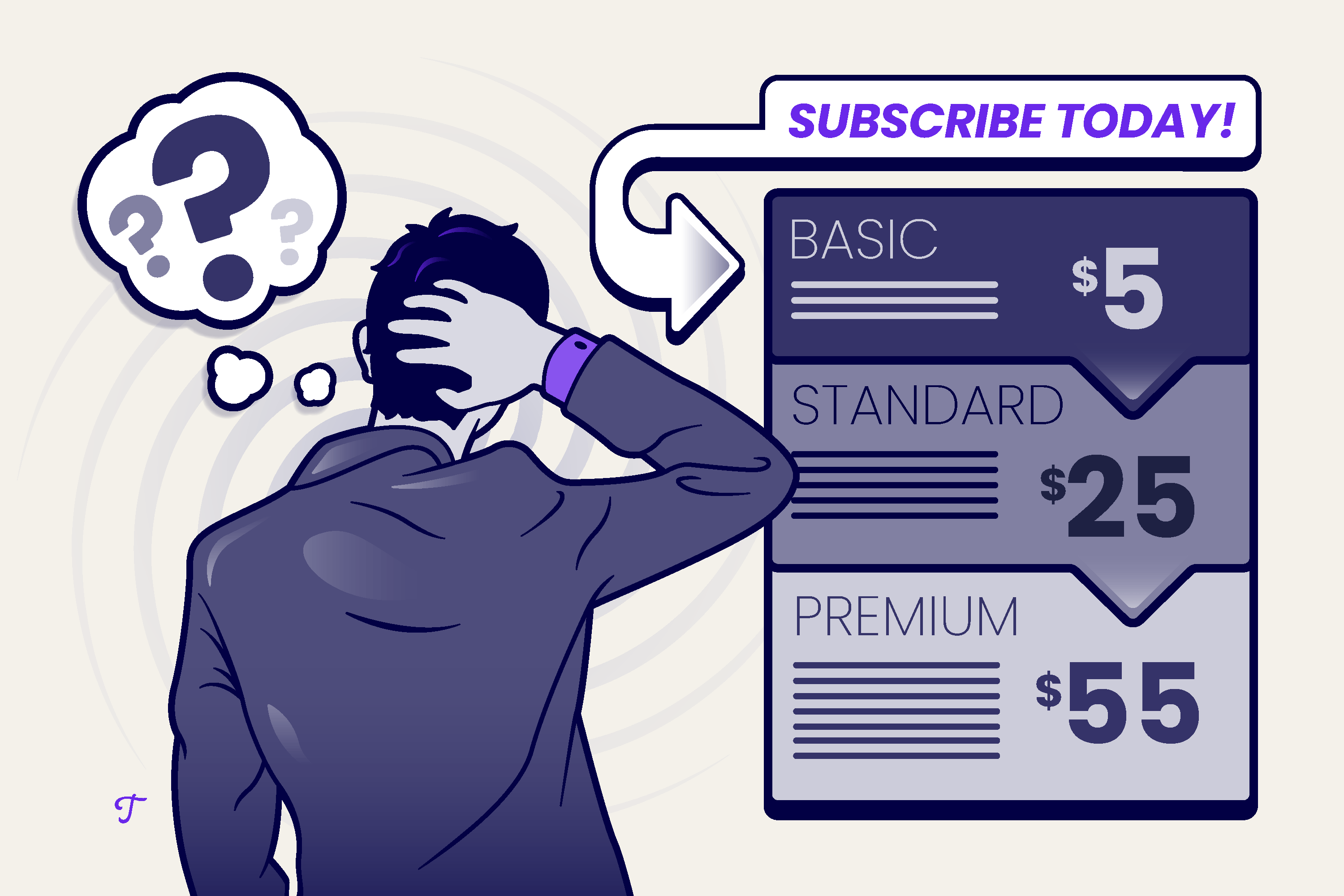
Articles
Considering a subscription model for your business? Read this first.
May 11, 2022

Subscription models exist in every industry, from Netflix and Spotify to StitchFix and Blue Apron. There’s a good reason why: These businesses have grown 435% over the last nine years. And that success might leave you wondering if a subscription service model is right for your SMB.
Even Apple recently announced plans to offer a hardware subscription, where customers can purchase iPhones by enrolling in monthly payments. They plan to launch the model by the end of 2022 and expect it to boost recurring revenue and stock price.
So, what exactly is a subscription model? And what are the pros and cons of having one?
Let’s find out:
What is a subscription model?
Subscription models enable customers to pay a recurring price — whether yearly, monthly, or weekly — for services or products. Unlike a one-time sale, subscriptions typically last for a certain period of time. And it’s up to customers to renew them unless you have automatic renewal in place.
There are four types of subscription models:
- Flat rate.
All customers pay the same amount for the same service. For example, Disney+ charges the same monthly fee for every household to access the same streaming service.
- Tiered pricing.
Different levels of subscription pricing are offered based on the type of service. SaaS companies commonly use tiered pricing because it enables them to support everyone — from single business owners to large enterprises
- Per user.
This type of subscription pricing is based on the number of users who will enjoy the service. Netflix, who is best known for adopting this model, only allows up to four users at one time.
- Per usage.
Customers are charged based on how often they use specific features or which features they need to use. For example, Mailchimp charges users based on the size of their email contact list and what tools they need to access.
Advantages of a subscription model
Subscriptions enable businesses to drive a steady stream of income from recurring revenue. And because they typically collect payment from existing customers, it’s much less costly than finding new customers.
Revenue from subscriptions is more predictable than one-time sales, which can help SMBs forecast future revenue patterns and predict their cash flow. If you’re selling a physical product, this might be helpful for inventory planning. It’s also beneficial when you’re trying to secure outside investors for more capital.
Offering a subscription model also increases brand connection, which might help retain customers for extended periods. For example, the Subscription Economy Index (SEI) found that 64% of subscribers feel more connected to the brands they subscribe to rather than companies they only engage with during a one-time transaction.
Cons of a subscription model
There are many benefits to having a subscription model, but it might be risky to implement one now with rising ad costs and supply chain disruptions facing direct-to-consumer brands.
To maintain subscription profitability, you need to keep your customer acquisition cost (CAC) low. And the same goes for your shipping and supplier costs if you ship products regularly. Otherwise, these expenses cut into margins and your ability to make money from subscriptions.
For instance, in the past two years, a Facebook ad that reaches 1,000 people went from $6 to $18. And thanks to the new iOS 14 privacy update, it’s harder to measure which ads are working. This means brands are spending more on worse results and skyrocketing their CACs.
In other words, it costs more today to get new customers to sign up. And with notoriously high customer churn rates — or how many people quit your subscription during a specific time frame — you need a low CAC to make a subscription model profitable.
Combine these rising costs with the recent supply chain fiasco, and it might be challenging to launch a profitable subscription. The price to ship one container from China to the U.S. was approximately $2,000 before the pandemic. Today, that number sits at $15,000.
All that’s to say: it’s not impossible to launch a profitable subscription model. You just need to be aware of the challenges so you can include them in your costs and set the right margin.
Steps to launch a subscription model
Now that you know the pros and cons, it’s time to decide if a subscription model is right for your SMB. And if you think it is, use these high-level steps to launch a successful subscription:
- Identify your subscription offering and which model from above works best.
- Create a price strategy that entices customers and doesn’t strain your cash flow.
- Design the packaging or experience so that it makes an impact for everyone, every time.
- Create a marketing plan and launch your subscription model.
- Consider offers to entice new customers and keep existing ones.
Launching a subscription model might be the right next step for your business — as long as you weigh the benefits and risks first. Get your leadership team involved in the planning, and if you’re serious about including subscriptions, be sure to have a firm plan in place.
Similar Blog Posts










